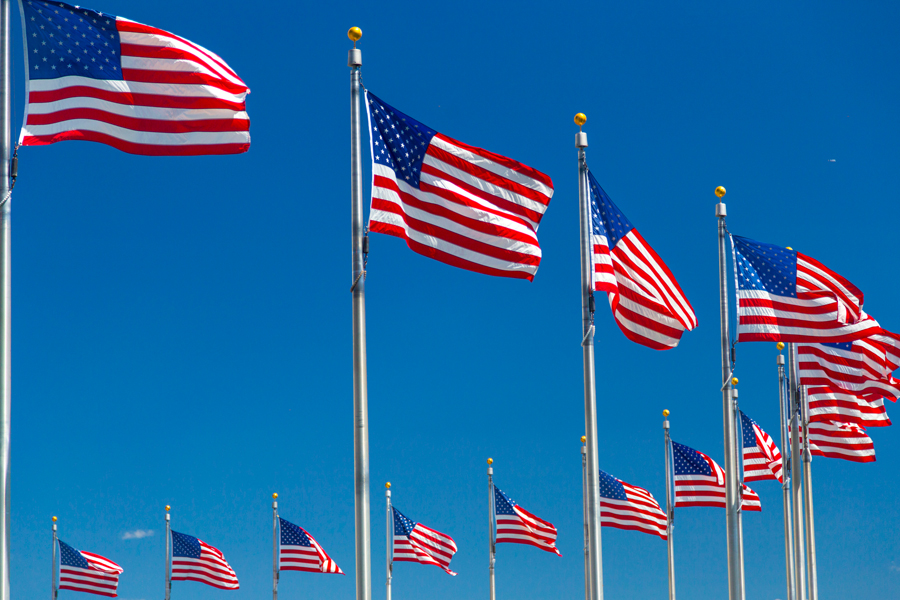The Postal Service will release Flag Act of 1818, its latest Old Glory-themed stamp, this week. To help mark the occasion, here are six flag facts you didn’t know.
1. The flag didn’t always have 13 stripes. The Flag Act of 1777 created the first official version of 13 alternating red and white stripes and 13 white stars in a field of blue representing the union. The design continued to evolve until the Flag Act of 1818 established the basic configuration we know today: 13 stripes to represent the original colonies and the number of stars matching the number of states.
2. Betsy Ross didn’t sew the original flag. While she is widely credited with creating the flag, there’s no evidence to support the claim, and she wasn’t publicly associated with the deed until 1870 — 36 years after her death.
3. The Star-Spangled Banner is real — and you can visit it. What remains of the original 30-by-42-foot flag that flew over Baltimore’s Fort McHenry during the War of 1812 is on display at the American History Museum in Washington, DC.
4. “Old Glory” was a specific flag’s nickname. In the 1820s, seafarer William Driver named his ship’s flag Old Glory. He moved to Tennessee in the 1830s and prided himself on never letting Confederate soldiers capture Old Glory during the Civil War. The name is now synonymous with any American flag.
5. The 50-starred flag was designed by a 16-year-old. When Alaska and Hawaii were contending for statehood, President Eisenhower solicited flag designs and chose Lancaster, OH, resident Robert G. Heft’s design out of thousands of submissions in 1959.
6. Six flags have been placed on the moon. Neil Armstrong and Buzz Aldrin planted the first in 1969 during the Apollo 11 mission.
Got ideas for future editions of “The list”? Email them to uspslink@usps.gov.
